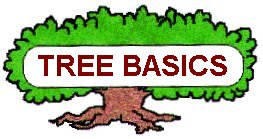

Home Page |
MICHIGAN FORESTS FOREVER TEACHERS GUIDE
| HOW TO USE A DICHOTOMOUS KEY |  |
What is a "Dichotomous" Key?
"Dichotomous" means "two-way", or a fork-in-road. A dichotomous key is a tool designed to distinguish the differences among a set of objects, in this case, a group of trees. The key separates trees into various categories, based on physical characteristics, until there are only two species remaining. It's sort of like a process of elimination.
The use of keys requires careful observation and usually involves the learning of some basic terminology. Patience is often needed, especially the first few times working through the key. These are excellent decision-support opportunities. During the process, students learn quite a bit about trees, or whatever taxonomic group a key is designed for. It is the beginning of a better understanding of trees, forests, and natural resources.
On-Line Tree Identification Keys
These are not common on the Internet, for some good reasons. The larger the geographical area covered, the more species are involved. More species means a more complex key and many more images and supporting documentation. Increased complexity is increasingly problematic and expensive. There are many excellent image sets on the Internet, but not many keys. Image sets generally require that you know what you're looking for before you look. A catch-22.
There are several good resources on the Internet.
1. Tree ID Key for Michigan's Upper Peninsula - http://uptreeid.com
This MSU Extension website was designed specifically for students and forest owners. There is a wealth of information about the trees of the U.P. It is more than just a dichotomous key. Applicability to southern Michigan is limited due to important changes in forest types.
2. National Arbor Day Foundation Key - Includes an app.
This is a key to the more common trees (about 130) of the eastern and central USA. It provides a good representation over a large geographical area.
3. An Atlas of
Current and Potential Future Distributions of Common Trees of the Eastern
United States
http://www.fs.fed.us/ne/delaware/atlas/index.html
This fascinating USDA Forest Service website allows the user to look at the distribution of a given tree species under various scenarios of climate change. There is a large somewhat confusing number of possible scenarios, and there are limitations due to the assumptions involved in any prediction of this type.
4. U.S. Forest Service "Silvics of North America"
A professional summation of nearly all commercial tree species in North America, divided into Conifers (~65 species) and Hardwoods (~130 species). Also includes a glossary, tree characteristics, insects & mites, disease organisms, birds, and mammals.
5. PlantMaps - http://www.plantmaps.com
A clever tool that displays tree species ranges in the United States. Plant Hardiness Zone maps can also be generated. Pretty neat site but knowing the botanical names of species helps.
Other Tree Information Resources
Botany Society of American - https://www.botany.org
University of Wisconsin Virtual Foliage - https://botit.botany.wisc.edu/
USDA Natural Resources Conservation Service Plants Database - https://plants.sc.egov.usda.gov/java/
USDA Forest Service Silvics Manual - https://www.srs.fs.usda.gov/pubs/misc/ag_654/table_of_contents.htm
USDA Climate Change Atlas - https://www.fs.fed.us/nrs/atlas
Tree ID key of a different sort - http://www.realtimerendering.com/trees/trees.html
Leaf Snap App - http://leafsnap.com
Linda Kershaw "Trees of Ontario"
Peterson Guide "A Field Guide to Trees & Shrubs"
Norman Smith "Trees of Michigan and the Upper Great Lakes"
William Harlow "Fruit Key & Twig Key to Trees & Shrubs"
MSU Pub E-2332 "Identifying Trees of
Michigan"
Tree ID Pages: ID Characteristics, Michigan Tree Species, ID Glossary
 |
This website was developed and created by Michigan State University Extension for the teachers of the State of Michigan. |
Page Name:
TreeBasics/TreeIDkeys.htm